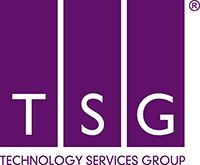Staying secure with Microsoft 365
We all know and love the classic Office Suite applications like Word, Excel, PowerPoint, and Outlook, which have been a staple in our daily work routines for years. However, with the introduction of Office 365 and more recently, Microsoft 365, the suite has expanded to include a plethora of new tools and features that can revolutionise the way we work.
These game-changing technologies can help us save time and energy, but only if we know how to use them effectively – and more importantly – securely.
You don’t know what you don’t know – so let’s go through how you can make sure you’re keeping your organisation safe and preventing as many cyber threats as possible on Microsoft 365.
Ways you can stay secure on Microsoft 365
Microsoft 365 is a powerful tool for productivity and collaboration, but it is important to take steps to protect yourself and your data while using it. There are a number of ways to stay secure on Microsoft 365, with a few of them mentioned below:
- Use strong passwords and two-factor authentication (MFA): Passwords are the first line of defence against hackers, and it is crucial to use strong, unique passwords for each account. Microsoft 365 offers two-factor authentication, which requires a second form of identification, such as a code sent to your phone, to access your account.
- Protect your administrator accounts: Administrator accounts are more vulnerable to cyber-attacks due to their elevated privileges. It’s crucial to establish and manage the appropriate number of admin and user accounts for your organisation to prevent unauthorised access to sensitive data.
- Train your employees on best practices for email security: Given that emails are handled by every member of an organisation, email systems are particularly susceptible to such threats, and the security of these systems relies heavily on human decision-making. To mitigate these risks, it’s crucial to train employees to recognise spam or junk mail, phishing attempts, spoofing, and malware, so they can make informed decisions when handling their emails.
- Use Microsoft Teams for collaborating securely and effectively: With Microsoft Teams your files and communications are stored in a protected environment.
- Set sharing settings for SharePoint and OneDrive files: Review these settings and make sure you’re only granting access to people who need it to complete their jobs.
These are just some of the ways you can stay secure on M365. We’ll be delving deeper into this topic during our free virtual training session on 19th April.
How can housing associations stay compliant on M365?
In addition, M365 has built-in compliance features that can help housing associations meet regulatory requirements but it’s important for housing associations to configure M365 to comply with data protection laws.
However, in order to identify what your organisation needs specifically, you’ll need to undertake a training needs analysis with a trusted IT provider.
What is a training needs analysis?
A training needs analysis (for Microsoft in particular) identifies gaps in your team’s current Microsoft 365 knowledge. This can be things like not knowing about the full breadth of applications available for use or not understanding how to get the most out of specific applications.
The process usually involves these steps:
- Assessing your current level of performance
- Identifying your desired level of performance
- Identifying your training and development needs
- Developing a training plan
At TSG we offer this for free – so we’re more than prepared to help you identify what you need to get started.
Join us for our Risk & Security for Businesses webinar series
Join us for a comprehensive learning experience on risk and security for businesses.
Our webinar series features three educational sessions that delve into critical topics on risk management and security for modern businesses. Led by our team of experienced security experts from TSG, these webinars are designed to equip attendees with practical knowledge and insights that will help them to protect their business from security threats.
Prevention, Detection & Response: From security threats to resilience Business Continuity: Moving your business to a more secure environment

